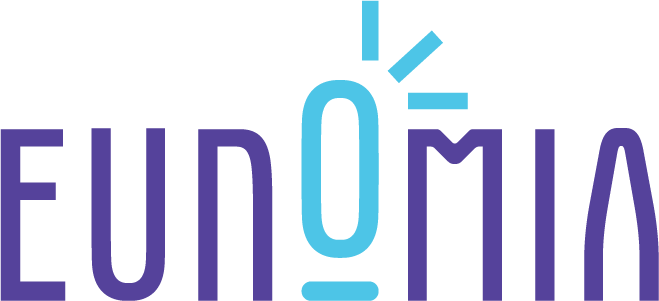 https://www.synyo.com/wp-content/uploads/SYNYO-NEWS-featured-image-NEW01007705EN.png
400
459
leo
https://www.synyo.com/wp-content/uploads/2017/09/synyo-logo.png
leo2025-01-01 10:47:112025-02-10 10:48:51BOND: Outcomes in Advancing Education, Tolerance and Heritage Preservation to combat Antisemitism
https://www.synyo.com/wp-content/uploads/SYNYO-NEWS-featured-image-NEW01007705EN.png
400
459
leo
https://www.synyo.com/wp-content/uploads/2017/09/synyo-logo.png
leo2025-01-01 10:47:112025-02-10 10:48:51BOND: Outcomes in Advancing Education, Tolerance and Heritage Preservation to combat AntisemitismEUNOMIA

EUNOMIA: Understanding user requirements and political bias in misinformation on social media
Following a co-creation approach, EUNOMIA aims to involve the users for its technical tools to identify misinformation – citizen social media users, traditional and social journalists – from the very start. With its research on human and societal factors, the consortium builds a sound foundation for the innovative tools, defining user requirements, as well as ethical, legal and societal considerations. This will allow the project to develop tools that engage and support social media users in the process of verifying the trustworthiness of information.
In the first phase of the project, the research team aims to understand the ethical, legal and societal aspects that need to be considered to design a set of tools which support the identification of trustworthy information in social media. As such, partners carried out a preliminary analysis of privacy, ethical, and societal issues related to the EUNOMIA project, including considerations of the EU General Data Protection Regulation (GDPR), as well as a Privacy Impact Assessment, and an analysis of user requirements.
Privacy and Ethics by Design
EUNOMIA follows a Privacy by Design approach, as well as an Ethics by Design approach, throughout the project’s lifetime. Privacy by Design means to embed privacy into the design and thus respect the users’ privacy. The principles of Ethics by Design suggest the process to be dialectic, reflective, all encompassing, and creative not disruptive. As such, a privacy, ethical and social assessment (PIA+) will be running throughout the project’s lifecycle. The aim of the PIA+ is to support the technical partners in the design and development of the EUNOMIA tools considering an ethics, privacy and data protection-by-design approach. This should not be seen as a ‘tick the box’ exercise, but rather as a productive process that includes all relevant stakeholders to collaboratively develop tools and methods to minimize potential risks.
In EUNOMIA, the PIA+ is conducted in three main stages: at the preparation stage, where the preliminary analysis is conducted, at the analysis stage, where a deeper analysis is taking place involving and consulting all stakeholders, and finally at the report and act stage, where the report is produced offering recommendations. Importantly, PIA+ process is not linear, but rather circular often being repeated throughout a project. So far, outcomes of the first stage show that human rights such as autonomy, dignity as well as privacy need to be considered. Furthermore, the project has found that political bias might emerge from input data both through the machine learning system and the more active users that might be of specific socioeconomic background.
The process of social media information verification
For developing EUNOMIA’s technical tools, it is crucial to understand the process users undergo to verify information in social media. EUNOMIA research has shown that there are five key categories of factors: source, i.e. the author of information on social media, either an individual or organisation, content, both textual and photo/video content, location and time, characteristics and domain expertise of the user verifying the social media content, and finally corroboration, i.e. evidence which confirms a statement. However, the steps undertaken in the research process differ based on the role of users.
EUNOMIA develops its tools for three different user groups: traditional media journalists, social journalists and citizen social media users. First findings indicate that Journalists – both social and traditional journalists – are more systematic and attentive than citizen social media users in the verification process. The findings also showed that political bias, age, and education are factors to be considered when verifying social media information.
Indicators for information verification
In collaboration with the other Austrian partner ORF, SYNYO carried out an analysis of user requirements of all three user groups. A workshop with ORF journalists, as well as a set of semi-structured interviews were carried out. These needs and requirements analysed directly contribute to the technical requirements as well as to the technical developments within the project. The results of the analysis provided the team with an understanding of the channels and networks used by the user groups. The findings also indicate that traditional media journalists use social media not as a source of information per se, but to find out about trends and to get inspiration, together with checking competitors via their social media channels. The main use of social media both for traditional media and social journalists is to promote and distribute their own content.
The results show that citizen social media users are very sceptical towards mainstream social media. However, most of them show a tendency to trust well-established mass media (e.g., the BBC). Citizen social media users also reported that they inform themselves about topics within their own specific interest and topics, but only passively follow world news.
Finally, all user groups tend to assess and verify information on social media, but only journalists (both traditional media and social) do verification as a standard routine. Journalists always double-check information, while citizen social media users only undertake verification steps if they already mistrust the given information. The analysis could identify key indicators for trustworthiness such as verification of account, display of full user name, objectivity, context, language, etc., which are taken up by the technical team following a set of 53 user stories.
Links
Keywords
Social media, user requirements, misinformation, ethical and legal considerations, fake news




